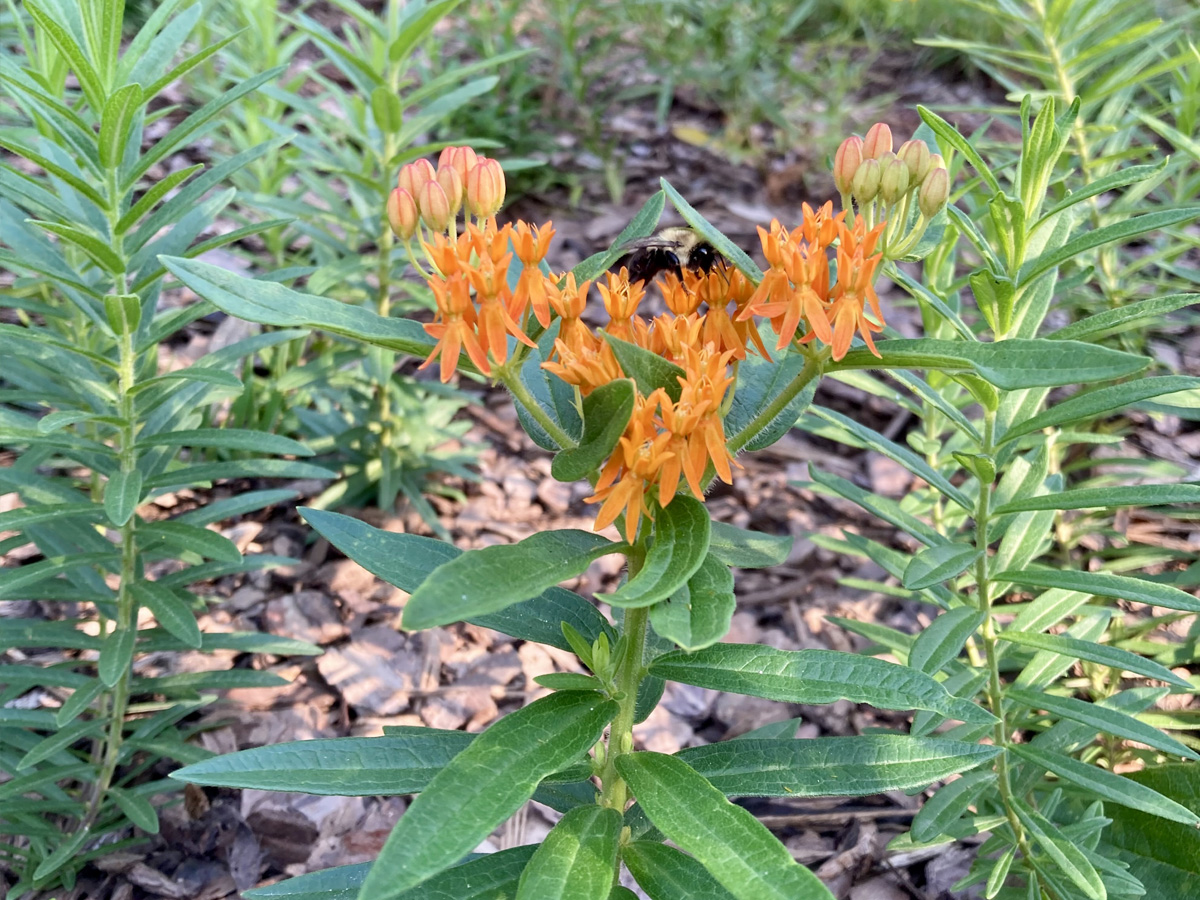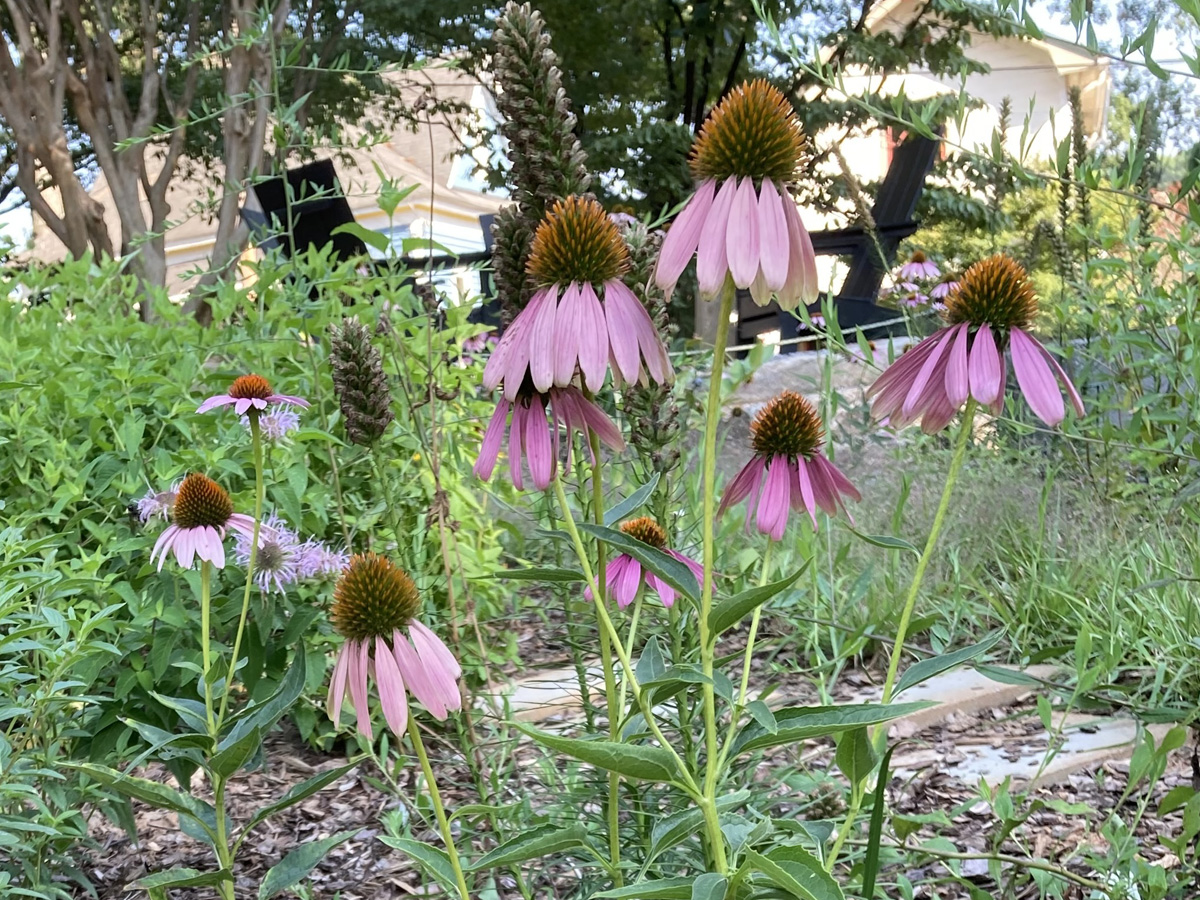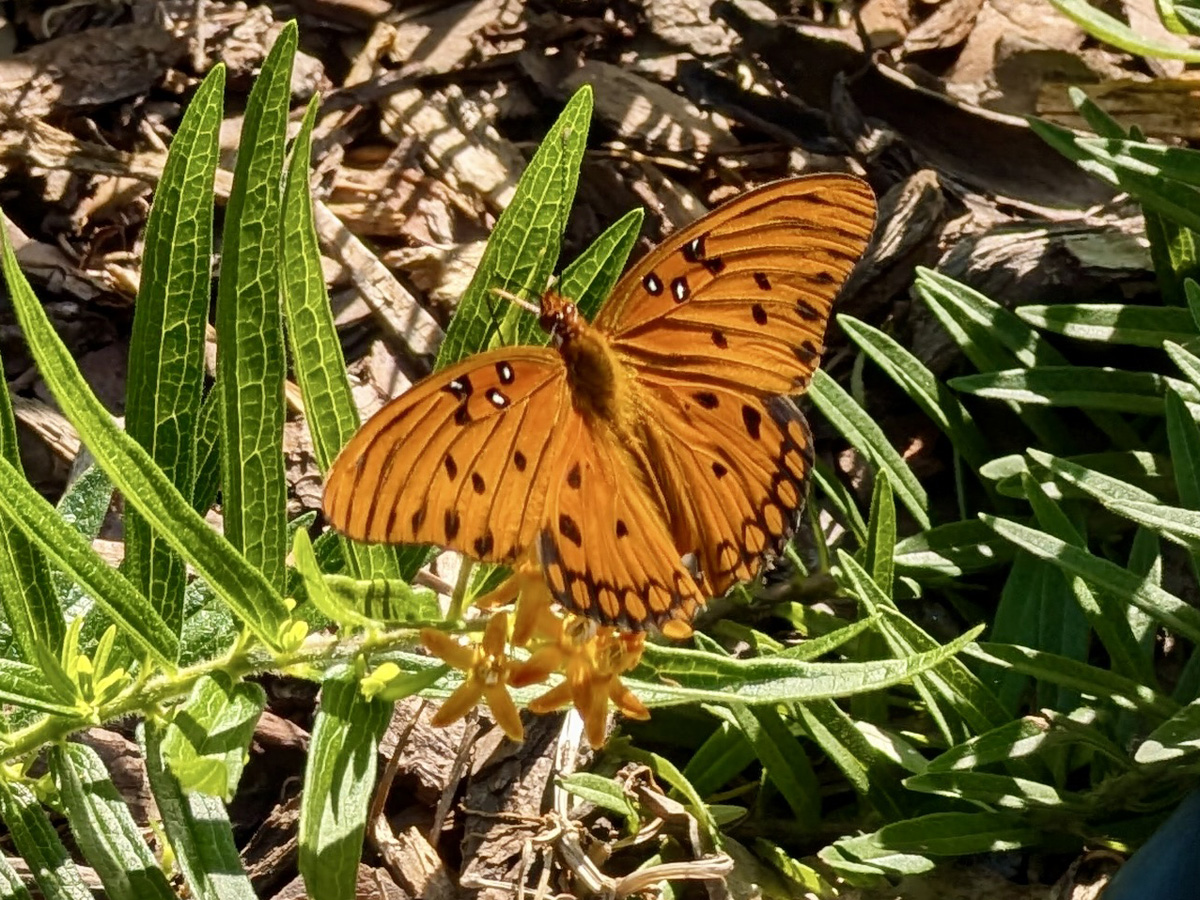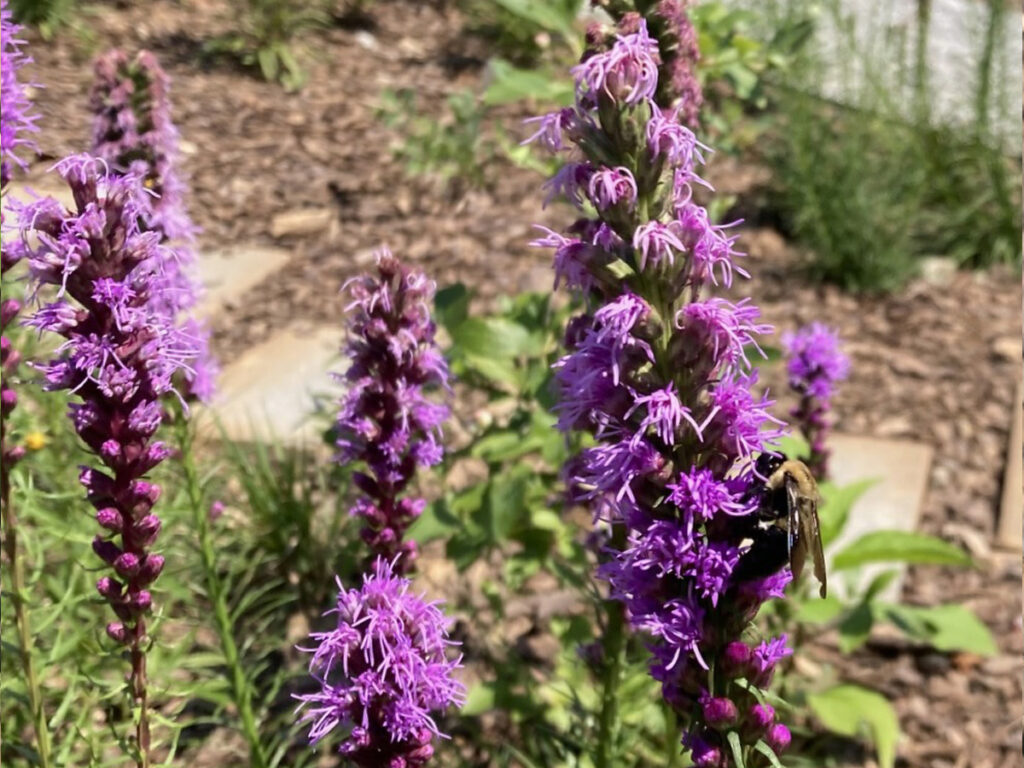We are proud to be have been granted Gold Certification from the Georgia Native Plant Society!!




Native Plant Gardening
Native plants are integral to Georgia’s rich and diverse ecosystem and offer numerous environmental benefits. Native plants evolved over thousands of years to thrive in our unique climate, making them more resilient to pests, diseases and extreme temperatures than non-native plants.They provide essential habitat and sustenance for birds, mammals, and insects, support pollinators like bees and butterflies, improve water quality and enrich soil health. They also require less irrigation, pest control and fertilizer than non-native species.
During the winter you will notice that it looks a bit a mess. There is a reason for that. Leaving seed pods and stalks up is important for supporting bird life and insect life over the winter. Many insects lay their eggs on the stalks and birds feed on the seed pods. Leaves from our trees are also important for insects to their eggs and are beneficial as a natural mulch protecting our plants through the winter.


While we are still working to clear out non-native and invasive species, but all new plantings (minus a few herbs – see the community section) in Gordon Park are native to the area. Check out the What’s Blooming section to learn more about the specific plants in Gordon Park.
If you are interested in adding more native plants to your own yard, the Georgia Native Plant Society is a great resource to find out which plants are truly native to the area. Many nurseries will denote native plants or there is a native plant shop in Decatur, Beech Hollow Farms, that offers native plants exclusively.
What's blooming
If you are interested in what is blooming now or what to look forward to, we would love to share what we have growing. A variety of native plants now occupy Gordon Park. There is a mix of blooming plants, shrubs, grasses, ferns, and trees. From month to month you will see different plants blooming throughout the park with so many colors and textures to lay eyes upon. And as the garden matures we will have fruiting shrubs and trees as well. Maybe one of these plants would be perfect for your yard!
One we would like to highlight is milkweed! We hope to have migrating monarchs some day soon!
Butterfly Weed (Asclepias tuberosa)
Have you seen the bright orange flowers in pockets throughout Gordon Park? These are Butterfly Weed, 72 plugs of which were planted in Gordon Park by neighborhood volunteers in April of 2024. A fabulous drought-tolerant plant, these tiny plugs survived our heat wave, have taken off in the past two months and are now happily covered in bees and other pollinators.
Bloom time: June – September
Ecological role: Provides nectar for numerous pollinators and exclusive host plant for migrating monarch butterflies.
Host plant: Monarchs only lay eggs on milkweed plants, which are then eaten by the larvae when the eggs hatch. Monarchs migrate to Mexico, a distance of over 3,000 and stop in Georgia on the way. They migrate through Georgia in April-May and August-October and are breeding during both periods. They can’t do this without milkweed. Due to habitat loss, pesticides, herbicides and other factors, migrating monarch populations have dropped dramatically in the last 20 years. Planting butterfly milkweed in Gordon Park supports these populations.
There are four milkweed species native to Georgia:
• Butterfly milkweed (Asclepias tuberosa): orange flowers, in Gordon Park
• Swamp milkweed (Asclepias incarnata): pink flowers, needs moist soil, taller
• Whorled milkweed (Asclepias verticillata): white to pale green flowers
• Smoothshead milkweed (Asclepias perennis): white flowers, found in floodplains
There are other species of milkweed commonly sold by local growers that are not recommended for Georgia for several reasons, including potentially spreading a disease harmful to monarchs (tropical milkweed, Asclepias curassavica) and pushing out beneficial native species (common milkweed, Asclepias syriaca). Don’t plant those!
For more information on milkweed and the species for Georgia, try this link from the Georgia Native Plant Society.
For more information on monarch butterflies: https://www.xerces.org/milkweed
Our plant roster! So many great options.
| Bloom time | Common name | Latin name | |
|---|---|---|---|
| Flowering perennials | Spring | American Alum root | Heuchera americana |
| Lyre-leaf sage | Salvia lyrata | ||
| Woodland phlox | Phlox divaricata | ||
| Wild indigo | Baptisia australis | ||
| Beardtongue | Penstemon digitalis | ||
| Eastern bluestar | Amsonia tabernaemontana | ||
| Green-and-gold | Chrysogonum virginianum | ||
| Fairy foam flower | Tiarella cordifolia | ||
| Eastern columbine | Aquilegia canadensis | ||
| Summer | Black-eyed susan | Rudbeckia hirta | |
| Smooth oxeye | Heliopsis helanthoides | ||
| Carolina rose | Rosa carolina | ||
| Large-flower tickseed | Coreopsis grandiflora | ||
| Blazing star | Liatris spicata | ||
| Wild bergamot | Monarda fistulosa | ||
| Spotted bee balm | Monarda punctata | ||
| Butterfly weed | Asclepias tuberosa | ||
| Lanceleaf coreopsis | Coreopsis Lanceolata | ||
| Culver’s root | Veronicastrum virginicum | ||
| Coneflower | Echinacea purpura | ||
| Smooth oxeye | Heliopsis helanthoides | ||
| Goldenrod | Solidago nemoralis | ||
| Late summer/fall | Blue mistflower | Conoclinium coelestinum | |
| Swamp sunflower | Helianthus angustifolius | ||
| Georgia aster | Symptrichium georgianum | ||
| Ferns | Southern Wood Fern | Dryopteris ludoviciana | |
| Lady Fern | Athyrium filix-femina | ||
| Dixie wood fern | Dryopterus x australis | ||
| Christimas Fern | Polystichum acrostichoides | ||
| Shrubs | Blueberry sp | Vaccinium sp | |
| Elderberry | Sambucus nigra spp canadensis | ||
| Sweetshrub | Calycanthus floridus | ||
| Hearts a’Bustin | Euonymous americanus | ||
| Chickasaw plum | Prunus augustifolia | ||
| Red chokeberry | Aronia arbuifolia | ||
| Virginia sweetspire | Itea virginica | ||
| Winterberry | Ilex verticillata | ||
| St. John’s Wort | Hypericum prolificum | ||
| Trees | Pawpaw | Asimina triloba | |
| Serviceberry | Amelanchier sp. “Autumn Brilliance” | ||
| Grasses | Muhly grass | Muhlenbergia capillaris | |
| Appalachian sedge | Carex appalachia | ||
| Purple Lovegrass | Eragraostis spectabilis |
If you are an Inman Park Neighborhood Association member, look for updates in the Advocator where we highlight various plants from month to month.